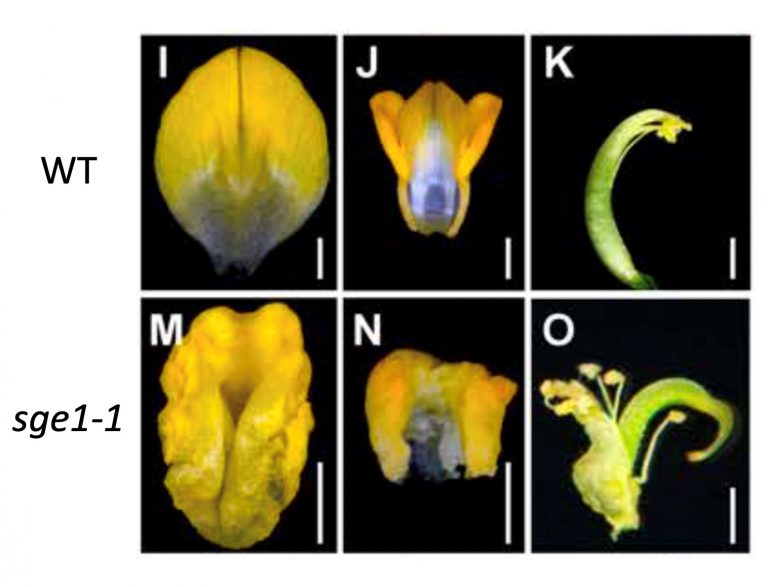Republished from the Plantae.org section Plant Science Research Weekly, a weekly section produced by the Plantae Fellows program members. Originally published on the 14th August 2020.

Floral architecture influences pollination and reproduction: open flowers facilitate cross-pollination, while closed flowers limit outcross. Some plants of the Leguminosae family (i.e., members of the Papilionoideae subfamily that includes soybean, pea, medicago, lotus) possess a complex architecture, with fused reproductive organs that make controlled pollination and breeding very difficult. In a recent study, Zhu, Li, Xia, and colleagues characterized the stigma exsertion 1(sge1) mutant in Medicago truncatula in which the flower forms abnormally, allowing the stigma to protrude from it. These changes result from an abnormal curvature of petals and the staminal tube, caused by contact between other organs of the flower. The authors found that the SGE1 gene encodes a G-class ATP-Binding Cassette (ABCG) involved in the transport of cuticle lipids, and cuticle permeability analysis revealed cuticle defects as the cause of the abnormal flower morphology. Functional analysis of other members of the ABCG family in Medicago allowed the identification of MtABCG13; mutations in this gene caused similar alterations in the flower. Since dimerization is an essential feature of these transporters, the authors conducted protein-protein interaction analysis; they found that SGE1 and MtABCG13 can interact physically, suggesting they work together to control cuticle secretions in the flowers.
Read the original paper: Plant Physiology
Article source: Plantae.org
Summary by Humberto Herrera-Ubaldo, postdoc researcher at the Stefan de Folter Lab in Laboratorio Nacional de Genómica para la Biodiversidad (Mexico). Consider to follow him on Twitter.
Image credit: Wikimedia








